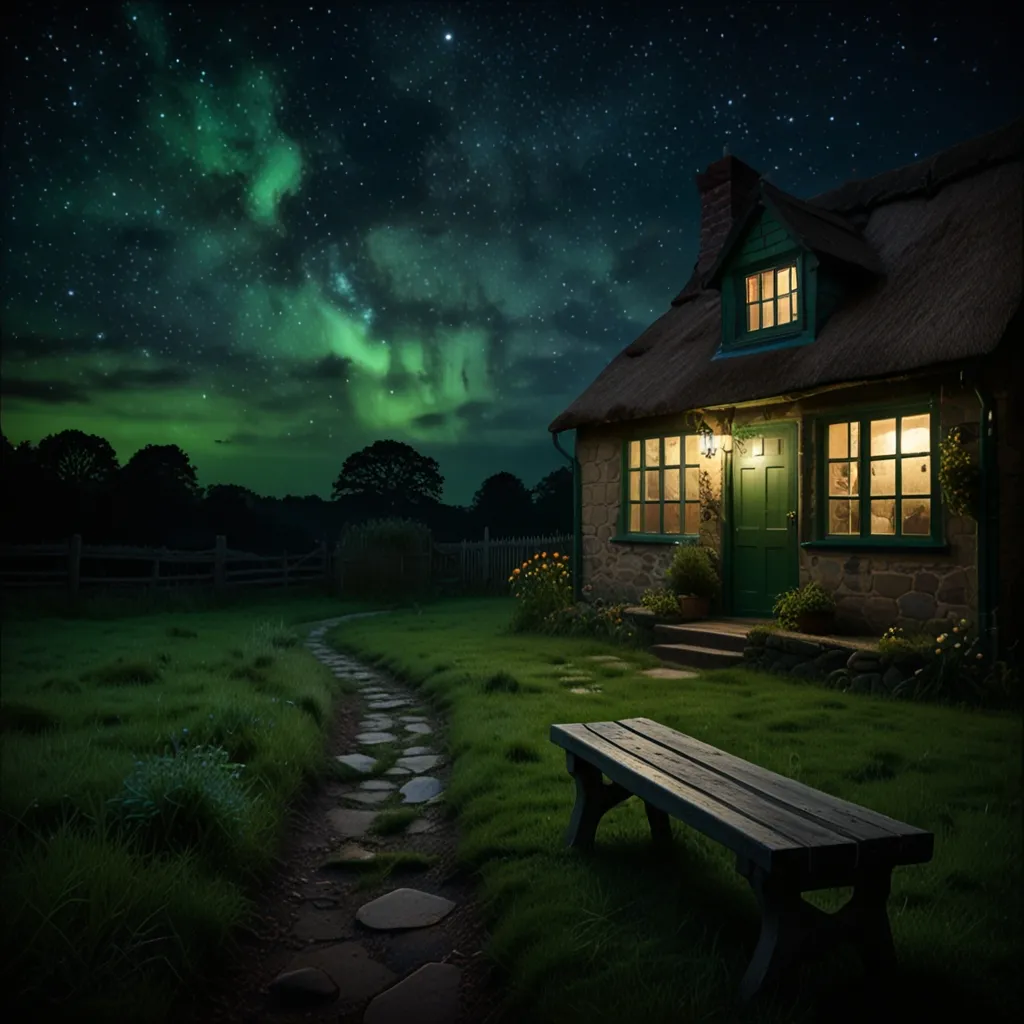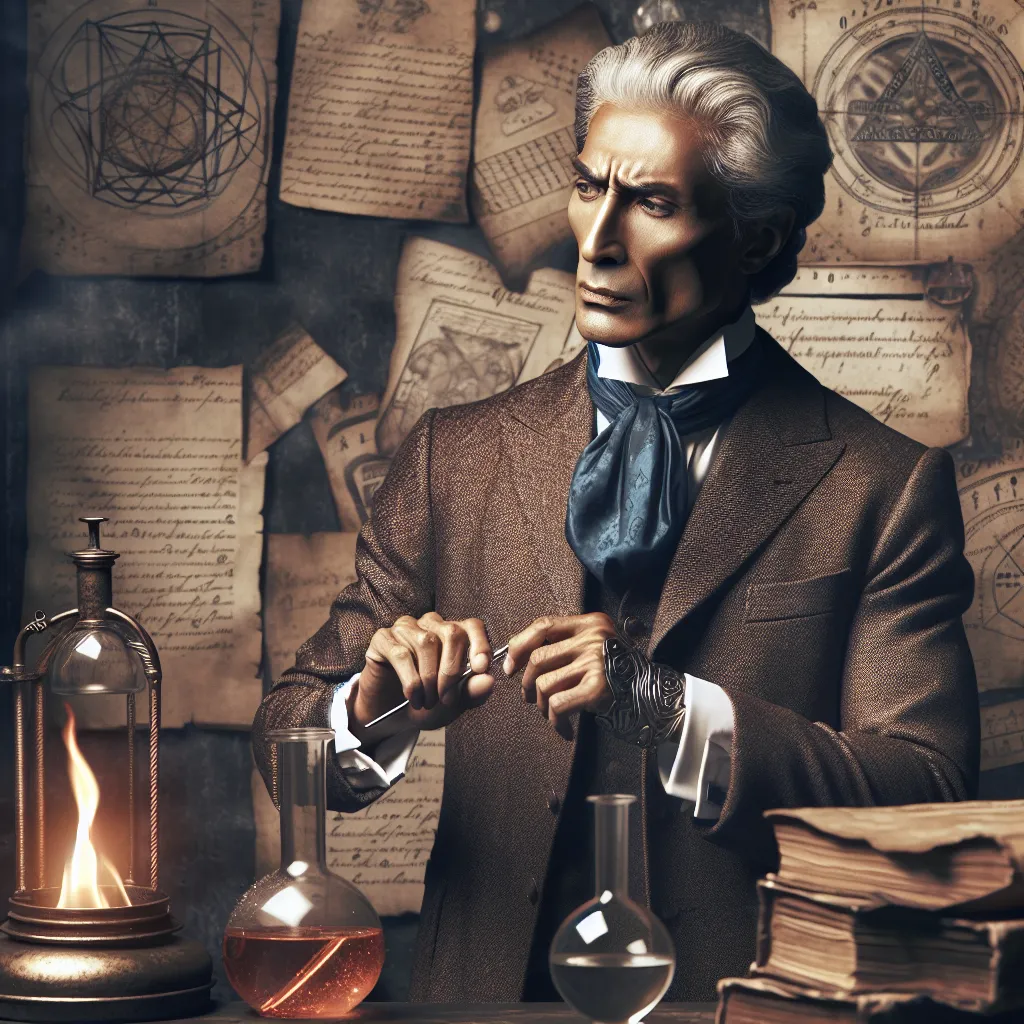In December 1984, life was about to get bizarre for Ken Webster, a high school teacher who was living comfortably in the quaint village of Dodleston with his girlfriend Debbie and friend Nick. One evening, as they ambled back home from the local pub, something beyond their wildest imaginations awaited them. A green glow pulsed from their cottage windows—a strange beginning to what would become an even stranger series of events. Upon entering the cottage, they were greeted by an unsettling sight: a mysterious message had appeared on their computer, a machine that wasn’t even connected to any network. Addressed by name, the message left the trio unnerved.
Over the ensuing months, more of these messages would surface. Suspicion of a prank quickly shifted as the messages revealed that they were apparently penned by someone living in the same house but from the year 1541. Ken documented these strange occurrences in a book titled “The Vertical Plane,” which dives into the madness that became a part of their lives.
The strangeness wasn’t limited to spectral emails; physical oddities began happening around the cottage as well. Peculiar footprints—six-toed, at that—showed up on their walls, stubbornly reappearing even after being painted over. Then there were the towers of everyday objects like cans and boxes, stacked improbably high and no one could explain how they got there. At first, Ken, Debbie, and Nick suspected mischievous locals, but no one confessed.
The messages started getting more intriguing. One particular message was written in an archaic form of English and indicated the writer, living in another time, was perturbed by their presence. It seemed to hint at a different kind of life back then, referencing a king and mentioning names like Edmund Grey. Could such messages hold truth? Ken printed each message, contemplating their authenticity or lack thereof.
Peter Trinder, a colleague at Ken’s school and a literature teacher, was roped into the mystery. Peter was convinced the messages contained authentic but crude Old English, which added an extra layer to the already enigmatic situation.
Driven by curiosity, Ken decided to respond to these historical musings on his little screen. He engaged in a written conversation, which was both eerie and exhilarating. Debbie, Nick, and Ken pondered the possibility of engaging with someone from centuries past—even as skepticism loomed.
Then, just when they thought they were getting a handle on conversing with the past, the mystery deepened. The 16th-century mysterious pen pal, apparently a simple farmer named Lucas (or eventually revealed as Thomas Harden), hinted that Ken was from the year 1985 and assumed he was in touch with someone from the far future—2109, to be precise. The thrill of communicating with two disparate points in time bewildered the trio.
The identity dance continued. Who was Lucas really? The messages from Lucas transitioned into those from this mysterious future entity, 2109. They claimed to be from a place, a universe, distant yet connected. Their influence was subtle, only providing Ken with bits and pieces that could be peeled back over time. Things got creepier around the cottage: footsteps of unseen walkers echoed at night, objects shifted positions, and rooms were plunged into icy cold. Ken and Debbie resorted to renting temporary space elsewhere to catch a break from the madness.
The trio even pulled in outside help. The Society for Psychical Research (SPR) was invited to examine the happenings. Two representatives from SPR tested the environment to catch a whiff of reality beneath layers of the paranormally bizarre. Their tests aimed at eradicating the idea of a hoax, but results were inconclusive and frustratingly elusive.
In the midst of all this, the historical intrigue thickened. While Lucas remained their primary correspondent, 2109 became an enigma that hinted at a broader cosmic narrative at play. Lucas, living in the 16th-century, faced his troubles too, getting accused of witchcraft, which intensified Ken’s concerns. Lucas shared tales about making cheese, brewing ale, and suggested his curiosity about what the future (Ken’s present) held. In one of the more gravitating communications, Lucas laid out details of his life, which Ken could validate through research into historical records; an effort to piece history together.
Ken’s plans transitioned into a more confrontational engagement. Amid the bedlam, Ken and Debbie attempted direct queries with 2109, hoping for answers that might untangle the vivid mystery that wrapped around them. 2109 offered cryptic and sometimes dense replies, controlling the narrative with a gentle grip—releasing only slivers of lore and subtle guidance.
The story culminates in tumultuous revelations as Ken and his team fought to find lucidity through the noise. Lucas’s communications were accompanied by a tactile note, handwritten and signed under his real name—a gesture calling for trust. This endearment tied a unique bond transcending centuries.
2109 alluded to them playing a part in altering historical narratives, a role unbeknownst to them yet significant enough to echo through the corridors of the future. The story hung on the precipice of being a legend or a historical fact, waiting for its characters to fulfill their peculiar destinies. Despite the fraying threads of skepticism, Ken and Debbie stood by their experiences, awaiting the truth to emerge and validate their bizarre chapter in history.
In Ken’s book, “The Vertical Plane,” the tale spins like finely woven tapestry connecting lives and communities through a shared enigmatic experience. To this day, mystery enthusiasts and researchers speculate on the technological, historical, and spiritual layers hidden within the Dodleston Messages saga. Whether real or hoax, one thing is unequivocal—it’s a fantastic blend of English history, science fiction, and human intrigue, keeping readers enthralled as they ponder the alternate realities nestled within the walls of an unassuming cottage in a small English village.






